 Iran’s Attack on Israel
Iran’s Attack on Israel
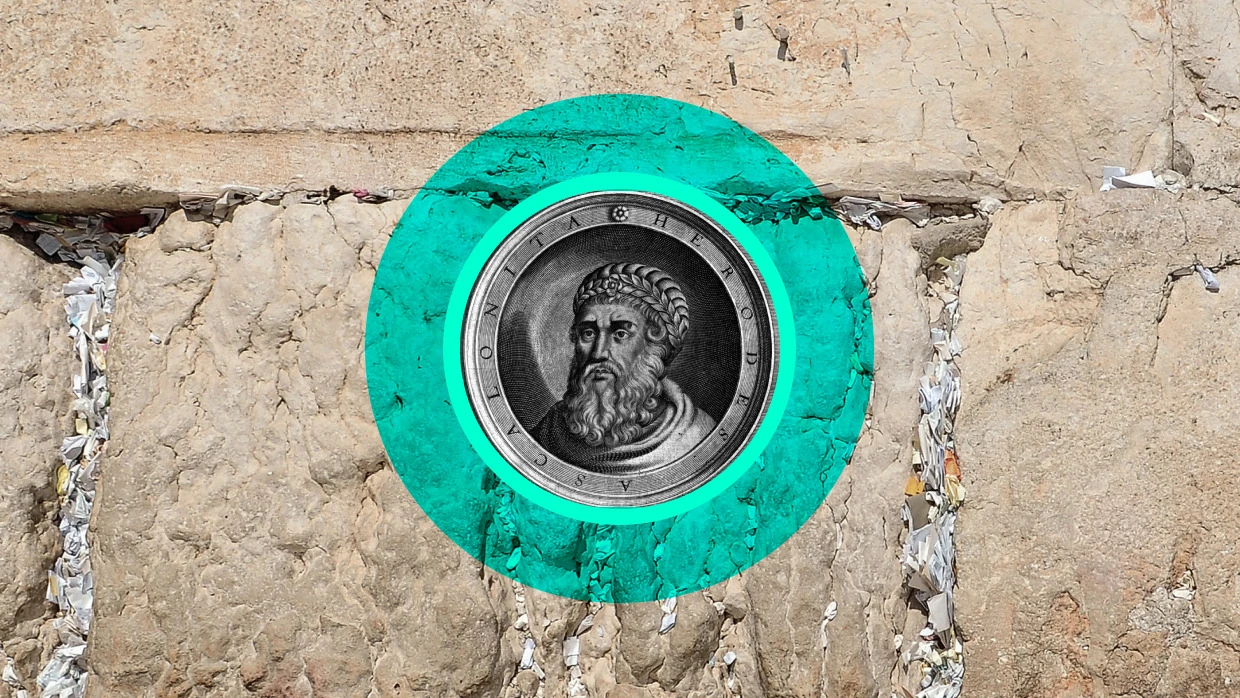

15 min read
How controversial leader became king of the Jews and built a massive empire.
What do the Western Wall, the Tower of David, the fortress of Masada, the ancient city of Caesarea, and the Tomb of Patriarchs in Hebron all have in common?
They were all built by one man, King Herod the Great.
Herod is considered one of the most famous kings in Jewish history because his ambitious buildings projects dated to the first century BCE have lasted intact or partially intact over a 2000-year period until present day. The colossal structures he left behind enable us to glean into the past and learn more about Jewish life in Judea towards the end of the Second Temple period.
His legacy is mired in controversy, from his execution of the country’s leading rabbis and members of his own immediate family, to his paranoia about being overthrown, his closeness with Roman imperial forces and even questions about his lineage. So who was Herod and how did he become king of the Jews?
In the aftermath of the Hanukkah story, the Maccabees (aka Hasmonean dynasty) ruled Judea for more than a hundred years. Immediately to the south of the Jewish kingdom lived a people called the Idumeans (Biblical Edomites), descendants of Edom (Esau’s nickname), brother of the patriarch Jacob. They shared a common language with the Jews, Aramaic, but the commonality stopped there. The Idumeans were idol worshippers like most of humanity at the time and were cultural very much Greco-Roman.
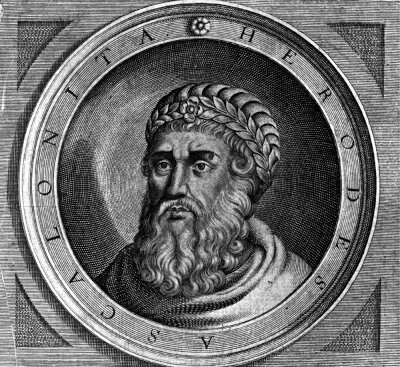
In the year 110 BCE, the Hasmonean king Yochanan Hyrcanus I conquered Idumaea and did something unprecedented in Jewish history. He forced the population to convert to Judaism. Such a thing never happened before and never happened since. Conversion in Judaism is typically discouraged, but when someone is genuinely interested and persistent, it is a long process of learning before being accepted as a convert. The rabbis of the time had many difficulties accepting the Idumean converts, but with time, they adopted Jewish customs and became assimilated into mainstream Jewish society.
During the Jewish conquest over Idumaea, a boy of four years old became circumcised for the first time. His name was Antipater and came from a wealthy and distinguished Idumaean family who owned mineral rights to the Dead Sea. Taking on the family business, Antipater conducted trade relations with the Nabateans, who inhabited the desert areas between the Dead Sea and the Red Sea. They controlled the spice trade from Yemen to the Mediterranean seaports southwest of Judea. As a result of his business dealings with the Nabateans, Antipater took for himself a wife, actually a princess by the name of Cypros, daughter of the Nabatean King Aretas III. They had five children together; Phasael, Joseph, Pheroras, Salome, and Herod. Baby Herod was born in 72 BCE.
Antipater’s wealth and influence over both the Idumaeans and Nabateans made him a valuable asset to the Hasmonean kings based in Jerusalem. As such, it was no surprise when King Alexander Yanai appointed Antipater as the Hasmonean governor of Idumaea. He became a respected government official amongst the political elite in Jerusalem. After the deaths of both Alexander Yanai and his wife Shlomtzion, their son Hyrcanus II was named heir to the throne in 67 BCE. Antipater saw Hyrcanus as weak-minded and easy to manipulate so he befriended him for political gain.
But not long after becoming king, Aristobulus II, brother of Hyrcanus II, attacked him and demanded the kingship. Hyrcanus surrendered and intended to withdraw from public life until Antipater convinced him to continue the struggle against his brother. Antipater introduced Hyrcanus to King Aretas III (his father in-law) in Petra (the Nabatean capital city) and arranged for him to come under his protection. Antipater left his children, including five-year-old Herod, in safekeeping with their grandfather King Aretas. With the support of 50,000 Nabatean soldiers, Hyrcanus and Antipater went to war against Aristobolus in Jerusalem.
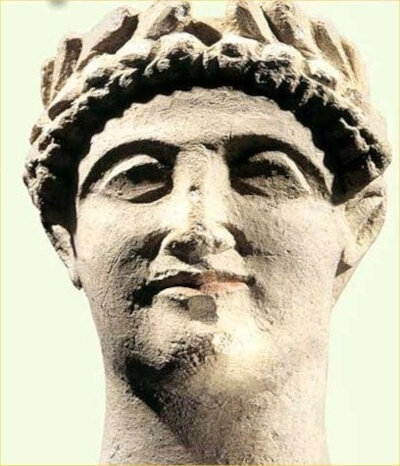
After four years of civil war, both brothers reached out for Roman military intervention and political support. The Romans under Pompey initially backed Aristobolus, but then shifted support towards Hyrcanus, possibly as a result of a bribe. The Romans then arrested Aristobolus and shipped him off to Rome as a prisoner, while Hyrcanus was designated the position of High Priest, but no longer as a sovereign Jewish king. Antipater on the other hand demonstrated a strong loyalty to Rome and was therefore granted an even greater role than Hyrcanus in administrating Judea. From this point forward, Judea became a vassal state of the Roman Republic, but with semi-autonomous rule.
By 48-47 BCE, a civil war broke out in the Roman Republic between the forces of Pompey and those of Julius Caesar. Antipater initially backed his patron Pompey, but after being defeated in battle, Antipater aligned himself with Caesar. While Julius Caesar was under siege in Alexandria, Antipater rescued him with the support of 13,000 Jewish soldiers from Judea. Caesar, grateful for the actions of Antipater, rewarded him with great honors including Roman citizenship, exemption from taxes, designation as the first Roman procurator of Judea, and the right to appoint his children into positions of authority. For this reason, his son Phasael became governor of Jerusalem and his son Herod became governor of the Galilee. Thus, Herod’s political career kickstarted at the age of 25.
As with any tyrant who becomes a new ruler, Herod’s first priority was eliminating any resistance to his authority and by extension any anti-Roman activity. With the aid of Roman troops, he suppressed Jewish insurrections in the Galilee and imposed heavy Roman taxes on the region. His toughness and brutality earned him respect from Roman authorities who expanded his realm to include parts of Syria to the north and Samaria to the south. His reputation at the same time attracted condemnation from the Sanhedrin, the rabbinical Supreme Court, who were shocked by his use of brute force against the Jews of Galilee. Hyrcanus even attempted to have him stand trial, but this move was blocked both by his father Antipater and brother, Phasael.
In 40 BCE, Antigonus, the son of Aristobolus II who fought a civil war against his brother Hyrcanus some 25 years earlier, instigated a rebellion with the support of the Parthians (Persian Empire), to drive out the Romans and their supporters, re-install the Hasmonean dynasty, and reclaim Judea as an independent Jewish kingdom. Herod was visiting Jerusalem when the rebellion broke out. As enemy troops marched towards the city from the west, Hyrcanus was arrested, mutilated, and sent into exile while Phasael committed suicide. Herod, fearing for his life, decided to flee with his entire family to the east in the direction of the Dead Sea.

Heading south along the Dead Sea coastline, Herod couldn’t help but notice his family members slowing him down. Remembering his experience as a 5-year-old child when his father Antipater left him with his grandfather in Petra while he set out to war, Herod had to think quick. Sticking out from the cliff line, Herod noticed a mountain with a flat peak and steep cliffs on all sides. He commanded a contingent of his soldiers and servants to take his fiancé princess Mariamme, her mother Alexandra, his mother Cypros, his sister Salome, his youngest brother Pheroras, and fortify themselves on top of the mountain. Fortress in Hebrew is Matzada and thus the mountain became known as Masada.
Herod and his most loyal followers continued moving south, then west, crossed the Negev and Sinai deserts on foot, reached the port of Alexandria (Egypt), sailed to Rhodes (Greece), and eventually landed in Rome. Herod used his skills as a charismatic orator in the Roman Senate to demonstrate his absolute loyalty to the Republic. While in Rome, seeing the ancient urban skyline for the first time, he was highly impressed by the city’s extravagant architecture, elements of which he would later duplicate in his future building projects. By the end of his trip, he made many friends amongst Roman politicians, was designated “King of the Jews” by the Roman Senate and was granted command of a Roman legion (30,000 soldiers) for the purpose of retaking Judea.
In 39 BCE, Herod, with the support of the Roman military, landed in Acre, recaptured the Galilee, the Mediterranean coastline, and broke the Hasmonean siege on Masada, thus liberating his family by 38 BCE. Despite living under siege for about two years, the Herodian family survived due to the high cliffs that surrounded the mountain, which made Masada a natural impregnable fortress. Herod decided that in the near future, he would build up Masada into a mega military complex so that in the event of any future rebellion against his rule, he would be able to survive under siege for many years.
By 37 BCE, Herod and his Roman allies besieged Jerusalem and fought a bloody battle to liberate the city from Hasmonean rule. Antigonus was arrested and his supporters executed, including 45 pro-Hasmonean rabbis who were members of the Sanhedrin. Over the next few years, Herod would seek out and eliminate all surviving members of the Hasmonean dynasty including one of his wives and two of his children. He even invited Hyrcanus the High Priest back from exile only to execute him as well, thus fully replacing the Hasmonean dynasty with the Herodian dynasty.
Once all threats were eliminated and his throne secured, Herod would embark on a series of massive building projects throughout the country over the next three decades. The first of these projects was Masada. Based on his recent experience of saving his family, Herod knew that Masada would be the perfect location for a city of refuge in case he had to flee Jerusalem again sometime in the future. Herod also figured if he’s going to be under siege for many years, he’ll need to have certain essentials, like water, food, a jacuzzi, a sauna, and one or two royal palaces. Using an advanced system of ancient hydraulic engineering, Herod found a way to channel flash flood water from the mountains in the west into a gigantic rock cut cavern inside the interior of Masada. The indoor cisterns within the cavern had the capacity for more than 10 million gallons of water, enough to fill 15 Olympic swimming pools. With full cisterns, 1000 people could survive on Masada for up to three years, even during a drought.
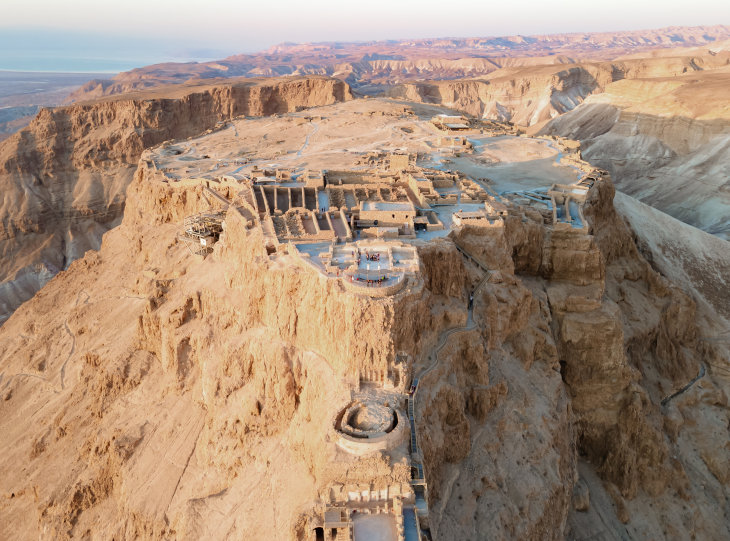 Masada
Masada
Herod also had storehouses of grain and dried fruit, some of which survived for 2000 years! After being discovered in archaeological excavations in the 1960s, they were replanted in Kibbutz Ketura near Eilat. One palace wasn’t sufficient for Herod. He built two on the same mountain, one on a three-tier cliff that housed Herod’s guest dining room. There, archaeologists discovered the ceramic jars of Roman era Italian wine with inscriptions reading “To Herod, King of Judea”.
After completing his luxury safe haven at Masada by 31 BCE, Herod turned his eyes towards Hebron. The Cave of Patriarchs in the city of Hebron is the revered resting place for the founders of the Jewish People; Abraham, Isaac, and Jacob, in addition to their wives Sarah, Rebecca, and Leah. At the same time, the city of Hebron during the Second Temple period was located within Idumaean territory. The dichotomy resonated with Herod whose identity was ethnically Idumaean, but religiously Jewish. Hebron was therefore the perfect place for Herod to project his legacy through architecture.
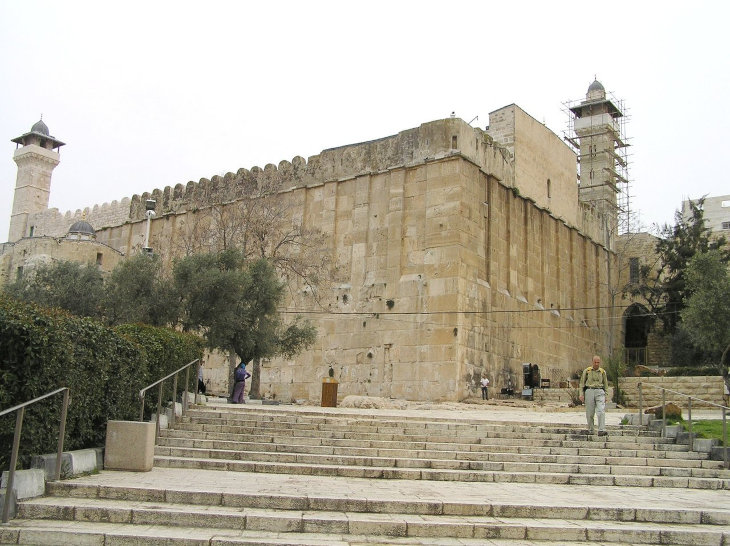 The Tomb of the Patriarchs, Hebron
The Tomb of the Patriarchs, Hebron
The Tomb of the Patriarchs is considered to be the oldest continuously-used prayer structure in the world and the only one of Herod’s buildings to survive fully intact, avoiding destruction by armies and earthquakes over a 2000-year period. The large ashlar stone walls with Herodian margins are identical to the design of the Western Wall. In fact, only the lower rows of the Western Wall today are Herodian. The upper rows were destroyed by the Romans and later rebuilt by various Muslim regimes. The only way we know what the upper levels of the Western Wall and Temple Mount looked like 2000 years ago is by seeing it at the Tomb of the Patriarchs, which was constructed using the same design.
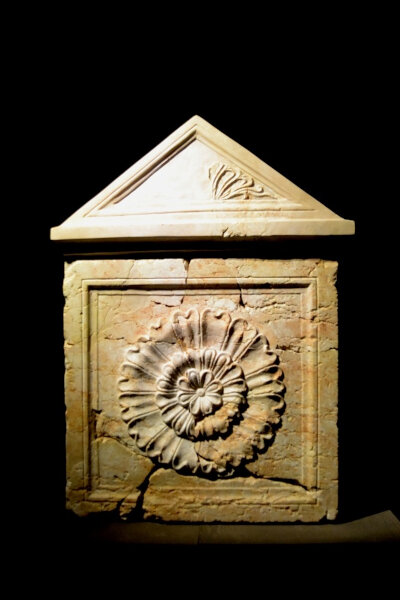 Herod's sarcophagus, displayed at the Israel Museum (Wikipedia)
Herod's sarcophagus, displayed at the Israel Museum (Wikipedia)
By 22 BCE, Herod embarked on a project to connect Rome with Jerusalem by constructing what would become the largest artificially built deep sea harbor in the world. Using limestone and volcanic ash imported from Italy, Herod built two massive breakwaters stretching more than 1600 feet into the open sea. The idea was to increase the Judean agricultural export that consisted of olives, dates, and wine and gain larger revenue from import taxes on construction materials and fabrics. In addition to the port, the city of Caesarea consisted of wide roads, markets, a palace, a theater, a hippodrome, an aqueduct, and a pagan temple, all of which are still partially intact and open to the public. Most of the population of the city were Greek speaking pagans and pleasing them meant scoring points with his Roman patrons.
Despite Herod’s apparent success, he was still disdained by the majority of his Jewish subjects who viewed him as a usurper to the throne, a mass murderer, and questioned the authenticity of his Judaism due to his Idumaean background and lavish lifestyle. Herod therefore needed to do some major damage control with his Jewish population. By this time, the Second Temple was hundreds of years old and badly in need of repair and renovation. As a means to appease the Jews of Judea and to atone for all the rabbis he executed, Herod initiated the largest and most ambitious project of which he’s most famous for – the expansion of the Temple in Jerusalem.
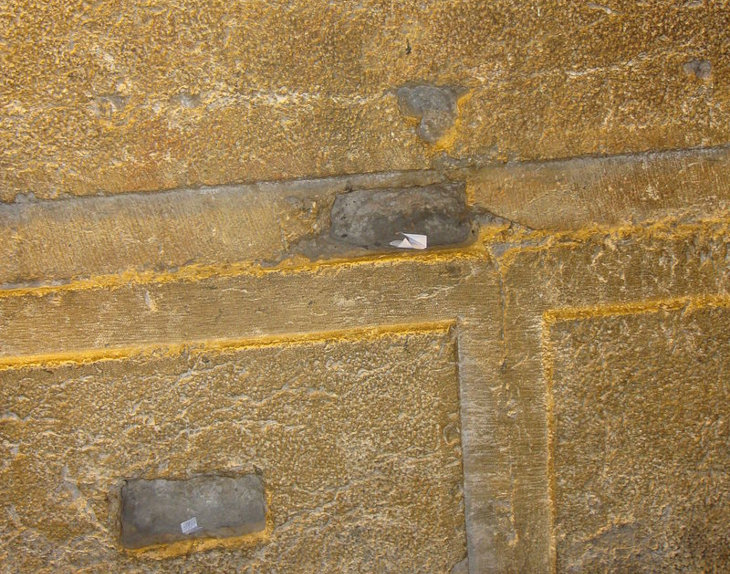 Detail of the distinctive pattern of Herodian stone-dressing as seen in the Western Wall Tunnel. (Wikipedia)
Detail of the distinctive pattern of Herodian stone-dressing as seen in the Western Wall Tunnel. (Wikipedia)
In order to enlarge the structure, Herod first had to tear it down and rebuild it from scratch. As you can imagine, the rabbis were highly skeptical of Herod’s motivation and did not agree to it until he first placed all the building materials, tools, and cranes on the Temple Mount site prior to the demolition process. The construction workers would also need to be of the Jewish priesthood since the site was considered sacred.
The building process took place between 20 BCE and 11 BCE using imported marble and gold, and reached a height of 150 feet. He also expanded the platform around the Temple from a surface area of 17 acres to 36 acres, doubling its size. In order to accomplish this task, he had to build large retaining walls on all four sides, the longest of which was the Western Wall, otherwise known as the Wailing Wall, the same one Jews pray at today.
The Western Wall is the closest point to where the Holy of Holies used to be located – the back part of the Temple that housed the Ark of the Covenant and was the dwelling place of God’s presence on Earth. The entire Western Wall of the Temple Mount spans about 1600 feet and only 230 feet is visible today in the plaza. Most of the wall is hidden behind houses in the Muslim Quarter and another small portion can be observed south of the plaza in the Jerusalem Archaeological Park. The Second Temple and surrounding Temple Mount are noted by various ancient historians and writers as being one of the most spectacular buildings in the known world. The Talmud even remarks, “He who has never seen the Temple of Herod has never seen a beautiful building” (Sukkah 51b).
To prepare for his own death, Herod constructed an artificially built mountain (about 200 feet above ground level) in the Tekoa region south of Jerusalem. Herod chose this specific area to build his tomb because it was here that he narrowly escaped death. Back in 40 BCE when he fled Jerusalem with his family on the way to Masada, he was being pursued by Hasmonean supporters of Antigonus who ambushed him there, yet he fought them off and emerged victorious. On the peak of the mountain, he constructed a fortress, a palace, and a mausoleum that would house his tomb. He also built large structures at the base of the mountain that included a recreational swimming pool so large that Herod was known to sail a small boat on it. He named the mountain tomb site Herodian after himself. He even organized his own funeral procession from Jericho to Herodian prior to his death (talk about a control freak)!
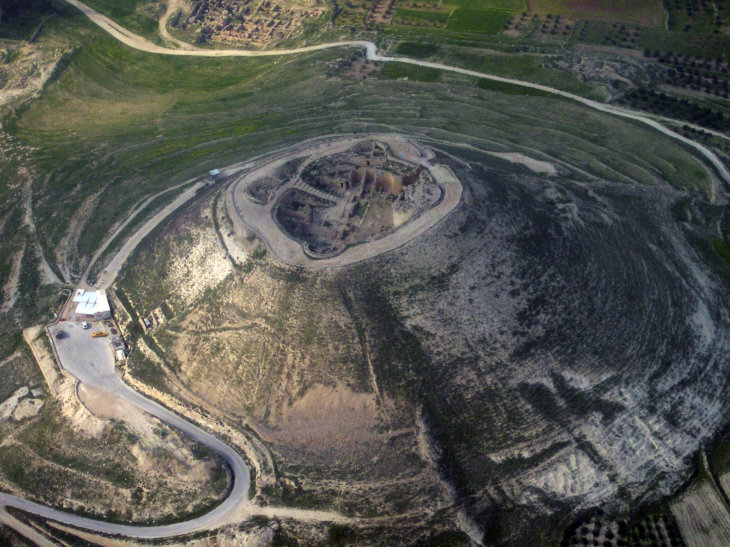 Herodian (Wikipedia Commons)
Herodian (Wikipedia Commons)
Herod the Great has was one of the greatest builders in Jewish history and possibly one of the greatest in the ancient world. He was also responsible for a large number of executions, for the purpose of securing his throne and satiating his ego. For better or for worse, Herod led one of the country’s most stable and peaceful periods as “King of the Jews” until his death in 4 BCE.

Foarte bun articolul!
Multe detalii pe care nu le știam
A very interesting article but it would benefit from citations
Indeed a very thoroughly researched article, with much new information. Unfortunately this magnificent temple construction by Herods would only last for 7 years.
Very interesting article. Can you explain why Herod is controversal rather than being considered a murder and how can we praise him for the beautification and expansion of the Beit HaMikdash, which he did for his own glory.
I think because he did bring a period of stability and relative prosperity, as stated at the end of the article.
Excellent article.